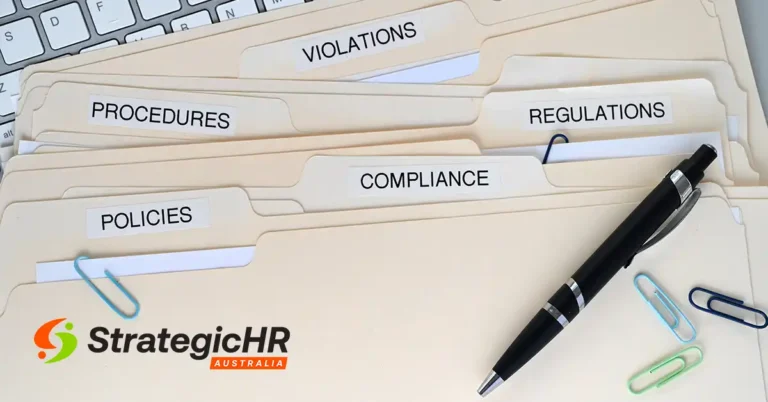A recent court ruling has once again highlighted the severe consequences of failing to prevent workplace harassment. An employer was fined $90,000 for not ensuring a safe working environment—proving that ignoring workplace risks can result in significant financial and reputational damage.
This case serves as a critical reminder to business owners and managers: without proactive policies and clear reporting mechanisms, your organisation could face serious legal repercussions.
What Went Wrong?
An Oz 22 Painting worker filed a complaint with WorkSafe Victoria after experiencing inappropriate behaviour from the husband of the employer’s director.
From the worker’s very first trial shift in May 2022, the husband of the employer began making inappropriate comments about her hair and personal interests. His behaviour quickly escalated, with repeated remarks about her appearance, persistent pressure to spend time with him, and even unwanted physical contact, such as placing his arm around her neck before laughing and walking away.
In July 2022, the situation took a more alarming turn when he picked her up for work but instead drove around for up to two hours, continually pressuring her to spend the day with him. During this time, he made explicit advances, including suggesting they go to a hotel room and offering to exchange massages. Feeling unsafe and unsupported, the worker ultimately resigned from her role.
Despite clear signs of misconduct, the company had no policies or procedures in place to address inappropriate workplace behaviour, including sexual harassment prevention measures. This failure led to a significant financial penalty and the employer being convicted of breaching workplace safety laws.
Lessons for Business Owners & Managers
Cases like this reinforce the legal and ethical responsibility of employers to provide a workplace that is safe and free from harassment. Here’s what you can do to protect your employees—and your business:
- Implement a Clear Anti-Harassment Policy
Having a comprehensive policy that explicitly addresses sexual harassment, bullying, and inappropriate workplace behaviour is essential. This policy should outline:
- What constitutes harassment and unacceptable conduct
- The steps employees can take to report concerns safely
- The consequences for those who engage in misconduct
- Provide Regular Training
Awareness is key. Educate all employees and leadership teams on workplace behaviour expectations, reporting processes, and the legal obligations of the business. Regular training reinforces a culture of respect and accountability. - Establish Safe Reporting Mechanisms
Employees must feel safe and supported when reporting inappropriate behaviour. Set up confidential reporting channels and ensure HR or management teams take complaints seriously, responding promptly and appropriately. - Take Immediate Action on Complaints
A failure to act can lead to legal consequences and damage employee trust. Investigate complaints thoroughly and fairly, ensuring appropriate disciplinary actions are taken when necessary. - Conduct Regular HR & Workplace Safety Audits
Many businesses only realise their gaps in workplace safety after an issue arises. Conducting regular HR audits can help identify risks early and ensure compliance with workplace laws.
Do Your Workplace Policies Protect You?
One of the biggest mistakes employers make is not having clearly written, legally compliant policies in place. Without them, businesses leave themselves vulnerable to legal claims, financial penalties, and reputational damage.
At Strategic HR Australia, we work with businesses to implement robust HR policies, create harassment prevention strategies, and conduct workplace compliance audits. We provide:
- Customised workplace policies to ensure your business meets legal requirements
- Training programs for employees and managers on harassment prevention
- Support in setting up reporting mechanisms and handling workplace complaints
- HR audits to identify potential risks before they become costly legal issues
Don’t wait for a legal case to highlight the risks.
Contact Strategic HR Australia today to safeguard your workplace and ensure your policies are up to standard.
Frequently Asked Questions About Workplace Harassment
Workplace bullying and harassment are serious issues that can have legal, financial, and emotional consequences for both employees and employers. To help business owners and managers navigate their responsibilities, we’ve compiled answers to some of the most commonly asked questions around workplace harassment, employer obligations, and compliance with Australian workplace laws.
What constitutes workplace harassment?
Workplace harassment refers to any unwelcome behaviour that creates a hostile or intimidating environment. This includes bullying, sexual harassment, and discrimination based on personal characteristics such as age, disability, or gender identity. (See Fair Work Ombudsman for more info)
According to Comcare, workplace harassment is a recognised psychosocial hazard that can contribute to serious health and safety risks. Employers have a legal duty to manage and prevent such risks in line with national WHS laws.
What is the 'positive duty' under Australian law?
The positive duty under the Sex Discrimination Act 1984 requires all employers to proactively prevent harassment and discrimination. This applies to all businesses, regardless of size, and shifts responsibility from reaction to prevention.
What are the consequences of failing to address workplace bullying and harassment?
Employers risk legal claims, financial penalties, Fair Work Commission orders, reputational damage, reduced productivity, and high turnover when harassment is not addressed.
How can an employer implement a workplace harassment policy?
Employers should create a policy that defines unacceptable conduct, outlines reporting processes, ensures confidentiality, and includes training and enforcement.
What role does the Fair Work Commission play?
The Fair Work Commission can issue stop-bullying orders and hear cases of workplace harassment. Employers are expected to comply with its findings and participate in mediation or hearings.
Are there industry-specific risks for harassment?
Yes. High-risk industries—such as construction, remote worksites, and hospitality—may require tailored policies, stronger controls, and additional staff training.
What steps should an employee take if they are experiencing workplace bullying or harassment?
Document the incidents and report them via internal mechanisms. If the matter is not resolved, employees can seek advice from the Fair Work Ombudsman or Legal Aid services.
Why should employers take workplace harassment claims seriously?
Workplace harassment claims must be addressed to protect employee wellbeing and ensure compliance with the Fair Work Act. Employers also have obligations under WHS laws and the Sex Discrimination Act to ensure a safe and respectful workplace. Ignoring claims can result in legal and reputational damage.







